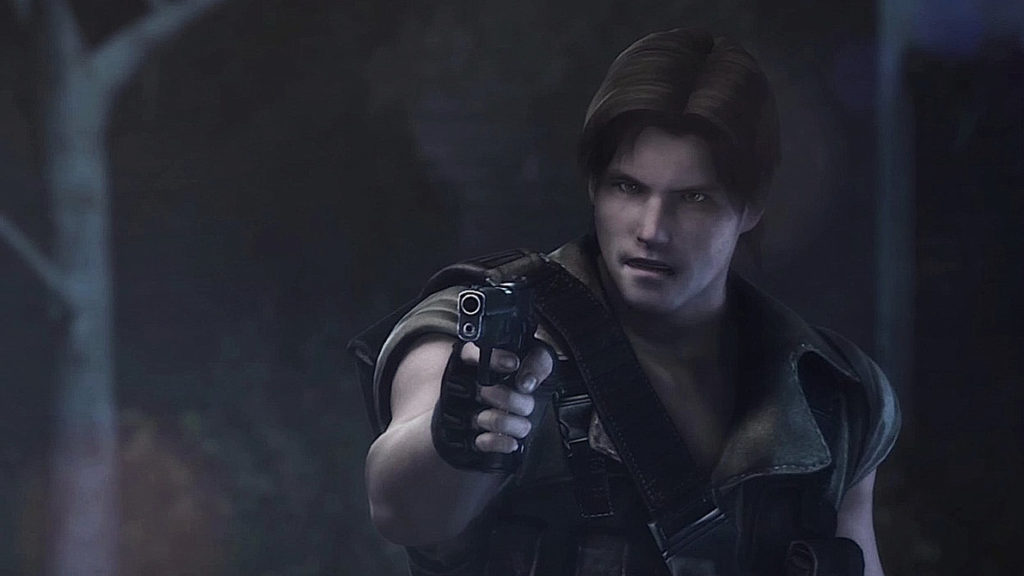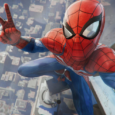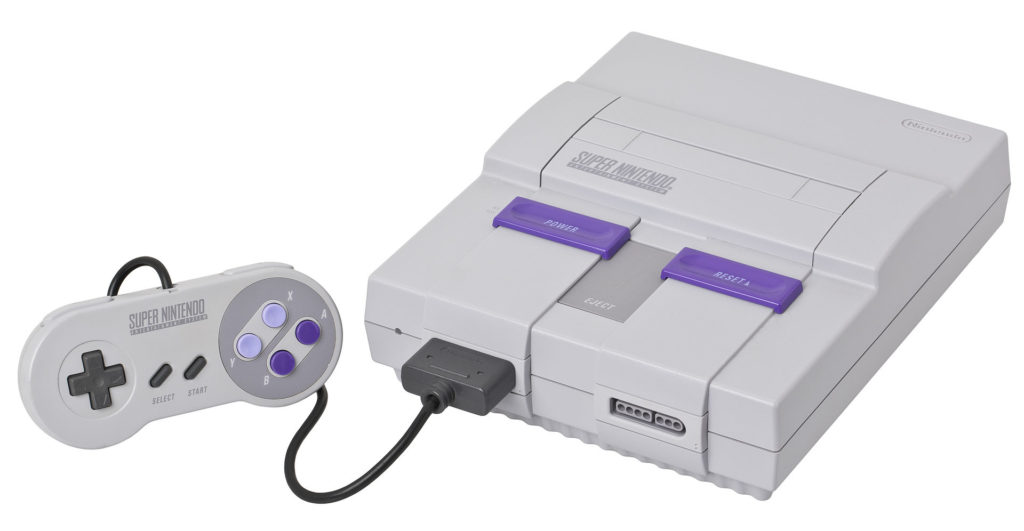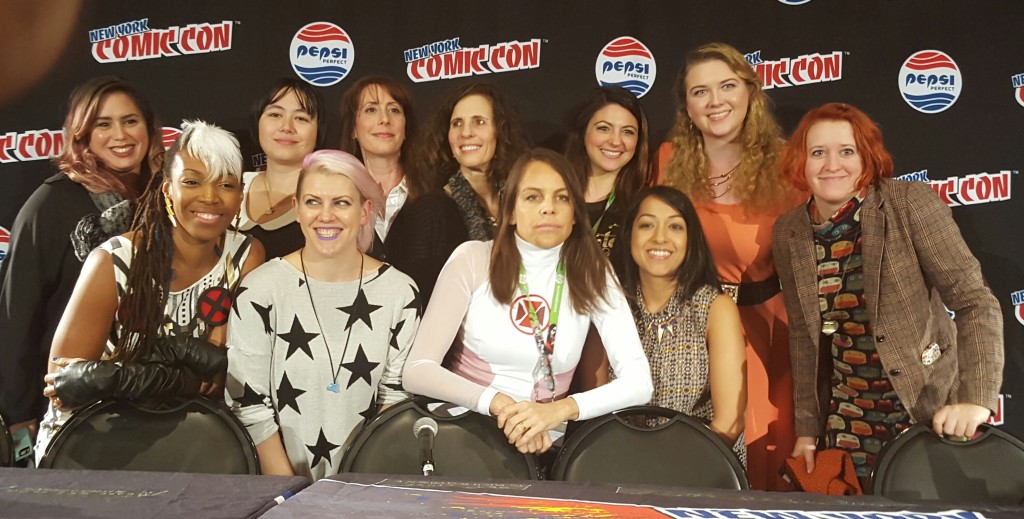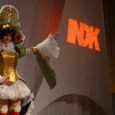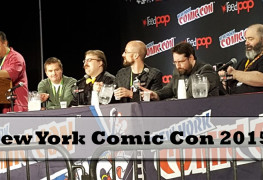I started this article during our September gaming month here at Sub Cultured. Since Hispanic Heritage Month also ran until mid-October, I had originally decided to compile a list of characters to showcase Hispanic representation in video games. I identify as Hispanic, having a mix of Spanish and Mexican blood in my genetic makeup (among others) and while my ties to my cultures aren’t very strong, I enjoyed the few times I’ve gotten to play as a Hispanic character. Upon writing this, I realized just how little I’d had the opportunity.
“From the press to the games they cover, the absence of black or Hispanic characters is limiting its fan base, its narrative potential, and its creative ideas.”
Where Are We?
For a lot of us, discovering Hispanic characters in our gaming choices means seeing ourselves on the screen and allowing us a place in the stories we played. Unfortunately, characters with darker skin tend to be strictly reserved for tertiary roles or worse, cameo appearances which end in death before we get a chance to experience any sort of character development. Honestly, I had trouble thinking of others aside from Street Fighter’s Vega and Resident Evil’s Carlos Oliveira. Vega is a gorgeous Spanish assassin whose modus operandi is killing women he deems ugly and is one of many choices on Street Fighter’s roster. Carlos is a South American ex-militia sort of guy with a good heart, and he even gets to save the day in Resident Evil 3. In addition to them, there are other, smaller roles prevalent in games, like the cholos in Grand Theft Auto installments, Bane in Injustice: Gods Among us, and while we are sprinkled throughout independent titles like Guacamelee, but where are the protagonists?
When I worked through the vast catalogue of video games I’ve ever played in my life, I found a solid argument could be made for Dead Rising’s siblings Carlito and Isabela Keyes as both were playable, fully fleshed out 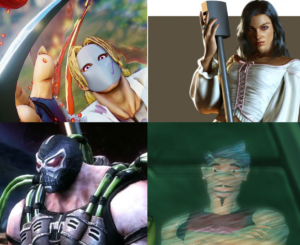 characters. However, it was disheartening to realize I’d come up with just two out of scores of main characters spanning dozens and dozens of popular franchises. We exist as NPC’s like Final Fantasy XII’s Al Cid Margrace and the A.I. Secundo from Beyond Good and Evil, but no matter where I looked, Hispanic and Latino main characters statistically don’t exist.
characters. However, it was disheartening to realize I’d come up with just two out of scores of main characters spanning dozens and dozens of popular franchises. We exist as NPC’s like Final Fantasy XII’s Al Cid Margrace and the A.I. Secundo from Beyond Good and Evil, but no matter where I looked, Hispanic and Latino main characters statistically don’t exist.
As I researched more characters, like Steve Cortez from Mass Effect or the handful of luchador based exaggerations, I noticed a trend. Mostcharacters consisted of stereotypes with similar accents no matter their ethnicity and language, or served a purpose little beyond forwarding the white male hero’s journey. Is this really how we’re seen? Settling for the bare minimum of representation is not what we deserve, and it’s something we should strive to change. Surprisingly, the fighting genre did far and above have the most inclusive characters, counting LGBTQIA individuals among their ranks like Guilty Gear’s Bridget and Kung Jin of Mortal Kombat, even though the genre is inherently catered to the male gaze.
It’s been some years since we have seen a “main character” introduced with a Hispanic background. What more do we have to do to get a game centered around us? Take a look around the next time you’re buying a video game. We ARE purchasing games, we ARE playing the shit out them, and we ARE an audience developers are not considering according to the most recent study. With the passing of one of the more influential Latino bloggers, Juan Carlos Alanis, in the past couple of years, no one has really stepped up and filled his place in the gaming community. There aren’t resources for us, so we are left to join the forums of places like the profit run IGN, or social media groups.
What Can We Do?
Can we make the gaming world aware of our existence?
Hell yes, we can.
Together we can be loud, and utilize the spaces and movements given to us. Brandish that #HeritageMonth hashtag between September 15th through October 15th. Reintroduce the gaming community to GameDev Latinos, a site highlighting developers from all over and where to buy their games. Create your own hashtags when you get to pick a Hispanic character. Overwatch, Blizzard’s immensely popular FPS, JUST added Sombra, the Mexican hacker. Use her, talk about her, and let’s raise awareness about how special she is to us.
We can create our own stories, and create our own games based on our rich backgrounds. Those of us with game development dreams, go for them! Let’s discuss how different a game’s story would play out because the main character is Brazilian, Dominican, Mexican ,etc (Spoilers: it wouldn’t be different). We don’t have to wait for a story starring us; we can create that story! CollegeScholarships.org has a decent list of resources to continue your education in those fields, both academic programs and scholarships, so take advantage of them! Indie blog Remezcla even recently highlighted up and coming developers after Kingdom Rush was created by Uruguay-based Ironhide Game Studios and grabbed the attention of the gaming industry a few years back.There are people making games actively right this second for you to work with.
Are you a convention goer? Request panels from Hispanic and Latino developers, or submit your own and start the conversation. I promise that if there’s one thing I’ve learned from talking too much about everything, it’s that you’re not alone in how you’re feeling. Sub Cultured will be attending PaxSouth in January, held in beautiful San Antonio, and my focus will be on seeking out games that represent us.
The Super Nintendo – or the SNES for short – celebrated its 25th birthday this week. Granted this may not mean much to the Sega faithful from the 80’s and 90’s, but as I’ve mentioned in previous posts I was a Nintendo kid growing up. My formative game time came courtesy of the original Nintendo Entertainment System. The Super Mario Brothers / Duck Hunt double cartridge for NES sank so many of my hours that it would be tough to tabulate how many fire flowers I digitally ingested or how many rounds I popped off on my Zapper light gun. When I discovered RPG’s and action/adventure games, that would put my hours logged shooting ducks to shame. I liked the obscure stuff – the stuff that none of my friends had, so I had some stock in trading cartridges with them like Yo! Noid and Seicross. And of course, my personal favorites Final Fantasy, Dragon Warrior, The Legend of Zelda, Ninja Gaiden and The Goonies II.
My friends and I all thought we were in the golden age of video games, but little did we know that the next-gen console introduced at the turn of the decade would change how the game is played forever. And you know, we were kids. That’s not an exaggeration even given my penchant for hyperbole – in 1990 the Super Nintendo, affectionately known as the SNES, changed everything.
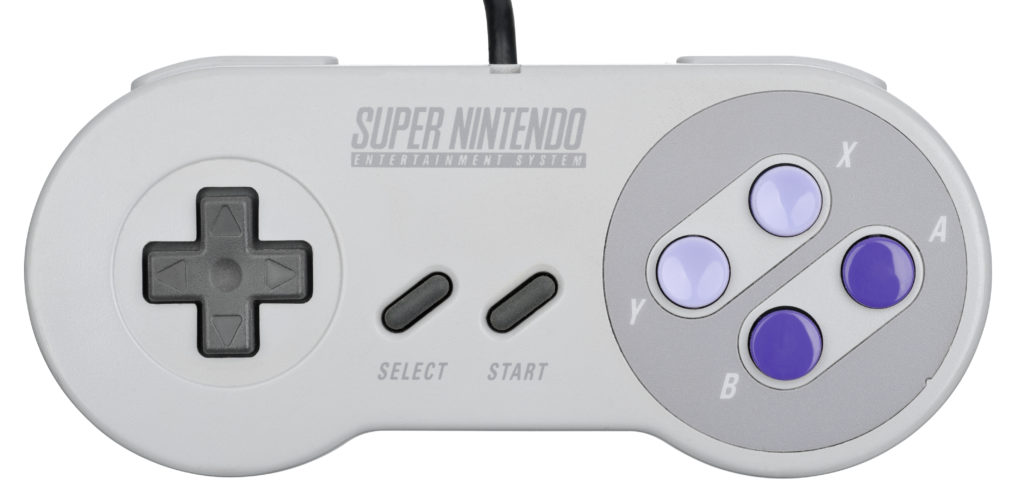 Back then terms like “16 bit” didn’t really mean much to me – all that I was able to see then was how I could do more things, and how games were deeper, and how the technology now existed to make better music and more memorable stories. We had a unit at home now that brought the flash of the arcade to our living room, and gaming went from single player to social time with friends. But still, what was so special about the SNES that brought about this change? It even overtook the Genesis, its 16-bit rival from Sega, which was already on the market with a number of games available.
Back then terms like “16 bit” didn’t really mean much to me – all that I was able to see then was how I could do more things, and how games were deeper, and how the technology now existed to make better music and more memorable stories. We had a unit at home now that brought the flash of the arcade to our living room, and gaming went from single player to social time with friends. But still, what was so special about the SNES that brought about this change? It even overtook the Genesis, its 16-bit rival from Sega, which was already on the market with a number of games available.
First off on the list of excellence was the SNES controller. This was the first console controller to feature six buttons with triggers on the corners to make gameplay more complex and fun. This stomped on the Genesis, which only gave us 3 buttons to play with. Sega was forced to make a 6 button version in 1993 to keep up. Anyone who’s played Street Fighter II Turbo and tried to pull off Vega’s jump dive on the Genesis will more than surely attest to what kind of pain was removed just from having more buttons. And that was one of the things that made it great – a six button controller made arcade fighters playable without a cabinet, and more importantly, without the aforementioned pain. It played right into the control scheme of the Street Fighter series with 3 punch and kick buttons each. Even Mortal Kombat titles needed 4 to be played cleanly – 2 each for punch and kick buttons. So instead of standing around in an arcade bleeding quarters into a game for play credits, round robin “winner keeps playing” sessions were how we did things. And good lord was it fun – the multiplayer of our time.
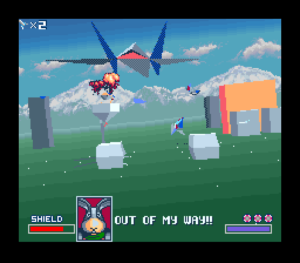 The controller setup was copied and used as a standard for generations to come. Look at your current PS4 and XBOX One controllers. They may have a couple of extra triggers and thumb sticks but what is the core control? 4 buttons, arranged in a diamond, with triggers on the side. Even though it was a big jump from the A and B buttons on the 8-bit NES, it let players have a control method that became second nature.
The controller setup was copied and used as a standard for generations to come. Look at your current PS4 and XBOX One controllers. They may have a couple of extra triggers and thumb sticks but what is the core control? 4 buttons, arranged in a diamond, with triggers on the side. Even though it was a big jump from the A and B buttons on the 8-bit NES, it let players have a control method that became second nature.
The controller was only as good as games that were made for it, and the titles pumped out in addition to arcade fighters for the SNES were legendary. Upgraded games with familiar characters came to life on the screen, starting with the Super Mario World title that shipped with the console. That game on its own took existing IP and brought it into a new generation with scrolling levels, a vast world map to travel and multiple power ups.
Even the pure graphical power, clearly able to be seen when dozens of cannons with moving projectiles came at you on side scrolling levels in World 8 left a player wondering what else this machine could do. The Legend of Zelda was upgraded and we had a new adventure with A Link to the Past, arguably one of the greatest video games of all time. And with each game release, developers showed what was possible by pushing the SNES engine – Pilotwings. StarFox. Donkey Kong Country. F-Zero. Each great in their own way, each memorable for different reasons, and each being a genre flagship on which future titles for future systems would stand on the shoulders of. It was quite literally a Super Nintendo. Better tech meant more colors, music with enough tones to provide mood, and it even dabbled in 3D gaming with the help of the SuperFX chip (self contained without the add-ons Sega was investing in, I might add).
And I must make special mention of one of my favorite games of all time, Uniracers. Thanks for wrecking that one for us, Pixar Legal.
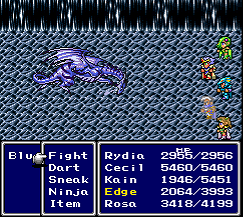 Final Fantasy fans in particular were given installments II and III in the series, re-branded from the Japanese IV and VI. Again, these games opened the door to what was possible when technology allows for good storytelling, and elements and themes of these games are even visible in the upcoming Final Fantasy XV.
Final Fantasy fans in particular were given installments II and III in the series, re-branded from the Japanese IV and VI. Again, these games opened the door to what was possible when technology allows for good storytelling, and elements and themes of these games are even visible in the upcoming Final Fantasy XV.
The SNES became more than just a game console. It was a solid proof of concept that games as a medium could tell a story and draw players into a virtual world where they could connect with their characters, require them to even take notes on some of the more complex puzzles, and give greater choice to the player on how he or she wanted the game to go. It launched an era that made games evolve from mindless entertainment to a real digital experience. And from indie developers to triple A studios, it’s a legacy that still influences what a game should be.
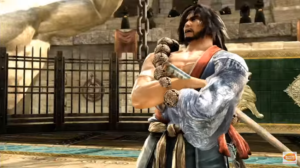 You can count on my having been an all purpose nerd for pretty much my entire life – to the tune of getting the call at age 10 to hook up my friends’ new SNES. And after I made the recommendation of A/V cables over the RF switch to connect it, he pulls out a shiny fresh Street Fighter II cartridge to bless the console with. Thus started the age of fighting games, round robin style – friends in a room where the winner victoriously clenches a controller, while his/her defeated adversary reluctantly passes theirs on. Now, take into account that this was 1991. I didn’t have a fast internet connection let alone a computer. So this was social gaming for us – no XBOX Live Lobby or PSN connections. Trash talk was live, and we were absolutely hype out of our minds.
You can count on my having been an all purpose nerd for pretty much my entire life – to the tune of getting the call at age 10 to hook up my friends’ new SNES. And after I made the recommendation of A/V cables over the RF switch to connect it, he pulls out a shiny fresh Street Fighter II cartridge to bless the console with. Thus started the age of fighting games, round robin style – friends in a room where the winner victoriously clenches a controller, while his/her defeated adversary reluctantly passes theirs on. Now, take into account that this was 1991. I didn’t have a fast internet connection let alone a computer. So this was social gaming for us – no XBOX Live Lobby or PSN connections. Trash talk was live, and we were absolutely hype out of our minds.
This continued through college (fast forward 10 years to 2001) where Soul Calibur became my new jam. My next door neighbor and I both became so good at it that we used to play in versus mode using Edge Master vs. Edge Master for added challenge to see who could hit 99 wins first. The only time we ever made it that far we were tied at 98-98, and when tension was at maximum on round 197, we double KO’d each other. We shook hands and decided never to do that again.
Sodas and chips turned to beer and pizza as we got older, but trash talk and admonishing each other for cheap ring-out victories stayed the same. But of course there were times when ridiculous things like classes and homework and labs got in the way. During those times, if you couldn’t get a quorum together, then you played alone. And that was OK! Most of the fighters I played had a built-in arcade or story mode, where you could follow a selected character’s storyline through after beating a final boss and seeing an ending. Characters were actually, well, characters. And you had a favorite, not necessarily because you “owned” with them, but just because you liked them.
And up to a point, if the arcade mode wasn’t enough for you, the Soul series went a step further in SC2 and SC3, by giving you a full scale additional single player campaign, allowing the player to create a character for a full scale RTS-type experience. And it was excellent. I could sit alone when the weather outside was frightful and go knuckles deep into a solo mission.
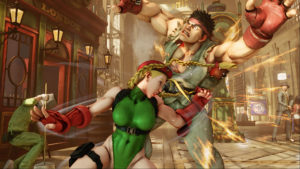 But then the decay started. Soul Calibur 4 replaced their secondary single player mode with some strange tower game. Then Namco robbed me of my money that I spent on the Soul Calibur 5 Collector’s Edition for what started off as a story mode but fooled me good. There was no story. Characters just came from some sort of abyss with no explanation and no backstory. I dubbed the game “incomplete,” but became clear to me later that this was intentional, and was tuned for online play in PvP.
But then the decay started. Soul Calibur 4 replaced their secondary single player mode with some strange tower game. Then Namco robbed me of my money that I spent on the Soul Calibur 5 Collector’s Edition for what started off as a story mode but fooled me good. There was no story. Characters just came from some sort of abyss with no explanation and no backstory. I dubbed the game “incomplete,” but became clear to me later that this was intentional, and was tuned for online play in PvP.
Street Fighter V did the same thing, by entrancing me with FMV video in their commercials leaving me to guess all the character relationships and who was fighting who else for what purpose. It pointed to some sort of story mode in the game, but as we all saw earlier this year, Capcom opted to not include single player arcade content. This was again, clearly intentionally incomplete. The quicker a PvP version of the game came out the quicker it could be played in video game tournaments. Problem is, that leaves out the con-competitive player in a series of games that traditionally had something for us – especially on CONSOLES, I mean come on. And if they’d advertised as such, I’d be ok with it. But that’s where it seems like it’s going with 2 of the major fighter franchises purposefully omitting single player options when they used to be (at least in the Soul series) extremely rich and deep.
I’m a cranky old man now, and I’ve always enjoyed fighters to play with my friends – or even moreso – play alone. I don’t want to pull a pro-level gamer who does this 10 hours a day to trounce the hell out of me to “lol”s. Screw that. I have a job and other things to do, and it may be old fashioned to say so but I’m only willing to buy a game if I’ll get an hour enjoyment out of each dollar I spend. I’m set in my ways, and when I can’t play a fighting game on a console with people I know then I’d like to have a option to satisfactorily play alone. And that’s what the story/arcade modes have always been. I want my gaming downtime to be enjoyable, not frustrating on the so called Capcom Pro Tour. So if this is the way fighting games are going, well then I may be done with them.
Yoshinori Ono, Street Fighter Producer, did however say earlier this month that he underestimated the popularity of single player features.” Now if something comes from that, I’ll consider strapping on the gi and red headband once more, Ono San.
As New York Comic Con gets bigger and bigger, it becomes impossible to take it all in, and no matter how well we plan for it, inevitably things don’t work out. Here is our breakdown of one of the fastest going conventions in the United States.
Thursday goals included attending the 88MPH: A Celebration of Back to the Future, a panel about DC Comics imprint Vertigo’s new #1s, attempting to get into the Viz Media/Musashi Kishimoto panel, and finishing out the day at MootCon4 to talk to people about the Game of Theories webseries. While not an entirely adventurous schedule, the sheer amount of people made it impossible to navigate the exhibit hall (or the smaller, craft/creator filled area called The Block) in a timely manner. New York Comic Con was wall to wall cosplayers in different Doc & Marty costumes (and a TON of Rick & Morty costumes as well), some so well done, several double takes were needed to make sure we didn’t accidentally walk by Christopher Lloyd himself. We had to slowly step our way to the Image booth where we met up with comic creator Ivan Brandon for a scheduled interview, before attempting to make headway toward the Funko booth, hoping to get our eyeballs on some of those exclusives! There were many promotional life-size POP! figures to promote the upcoming Smuggler’s Bounty, and it was difficult to tear ourselves away and re-evaluate our plan as the hour grew late. It was here our paths split, with Tushar checking out the Games and Education panel, Kaitlyn calling it a day, and Leia preparing for a long evening of line waiting to spend an hour in the same room as Naruto creator Masashi Kishimoto, before preparing for day two.
 As the weekend progressed, we saw the floors even MORE packed than before and our weary correspondents loaded up their schedule with panels. First, however, Kaitlyn and Leia wandered over to the Audible booth to try out the immersive Locke & Key experience via Oculus Rift, before an interview with Sean Lewis and Benjamin Mackey, newbies in the comic industry. Artist Alley was a sight to behold this year, with greedy fingers reaching for art prints on our way to interview Justin Jordan, and get some stuff signed.
As the weekend progressed, we saw the floors even MORE packed than before and our weary correspondents loaded up their schedule with panels. First, however, Kaitlyn and Leia wandered over to the Audible booth to try out the immersive Locke & Key experience via Oculus Rift, before an interview with Sean Lewis and Benjamin Mackey, newbies in the comic industry. Artist Alley was a sight to behold this year, with greedy fingers reaching for art prints on our way to interview Justin Jordan, and get some stuff signed.
Now despite the name “New York Comic Con,” non-comic media, like television, was there in force too. The folks at Adult Swim were up to their old tricks again with roundtables for Venture Bros, Robot Chicken, and the new miniseries airing soon, Neon Joe, Werewolf Hunter. (You can check out our preview at Adult Swim at NYCC – Neon Joe, Werewolf Hunter). Getting to meet TV personalities like Jon Glaser, Stephanie March, Breckin Meyer and the crazy duo of Doc Hammer and Jackson Publick went exactly as we thought it would go. Antics upon hijinks upon gut busting laughter. It was tough to get through the whole thing without addressing Stephanie March as anything other than “Assistant District Attorney Alexandra Cabot,” but ultimately composure was kept and we found that she, along with the rest of the Adult Swim actor corps, were super cool and friendly people.
TV wasn’t the only non-comic media to make a splash this year. Video games made their presence felt too. If you had (like we did) a bit of trouble getting through the main entrance to the con floor because of a pure sea of concentrated humanity, you were probably going by the Capcom booth. Lining the booth was an army of Street Fighter enthusiasts, and it WAS possible (but not probable) to slither your way in to get a crack at seeing some gameplay from Street Fighter V. The game played faster than its predecessor Street Fighter IV, and you could see some of the classic cast like Karin making their return from the Alpha/Zero series of Street Fighter games. There was a tournament going on as well, so there was always the chance that if you went in to get schooled, it would be public on a lot of large screens.
Square-Enix decided to take the quieter route and had a media suite set up a Shop Studios, just a couple blocks away from the Javits Center. It was nice to get away from the bustle of the con floor for guided demos of their games to small groups of people, and the fact that they fed us definitely did not hurt the experience. Making the rounds through Shop Studios we saw the upcoming Deus Ex: Mankind Divided (check out our preview here), Hitman, Just Cause 3, and the finale to Life Is Strange with Episode 5. The biggest and friendliest surprise though was that Lara Croft: GO wasn’t the only appearance our girl Lara Croft made that day. The full playable demo of Rise of the Tomb Raider looked and played absolutely great.
The Star Wars franchise decided to take an in between approach, setting up their Star Wars Battle Pods outside of the con floor but still inside the Javits Center, making it easy to get to and a beacon of the force as people entered the building. The battle pods let you take command of a few different vehicles from the Star Wars universe, from going on a Death Star bombing run in an X-Wing to trying to hang on for dear life on a speedbike on Endor. Either way, the ride was complete with vibration and pod shakes that one would presumably feel taking your X-wing out of the hangar.
Our last day was spent tying up loose ends, such as taking photos of the creepiest cosplay we could find, picking up more stuff to give away to you guys, and making our last stop at the phenomenal Women of Marvel panel, before shambling off home.
Be sure to check out our other convention coverage and we hope to see you guys in the future! We can’t wait for next year, and leave you with this awesome cosplay video from our friends, SneakyZebra.
In case you haven’t already, don’t forget that we are giving away a bunch of stuff for those of you who didn’t get to attend! Enter below.
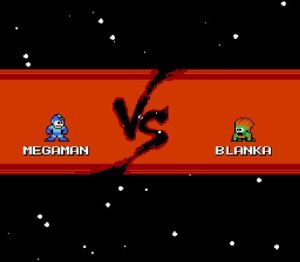 When I was a wee lad, my first console was an NES. And even back then when the world lived and loved 8 bits at a time, I became a fan of Capcom – a lot of the games I enjoyed playing came out of Captain Commando’s namesake house, many of which went on to become classics. And they had style, kids. I flew in the war in 1942, played soldier in Commando and its Bionic sequel, channeled my inner avian billionaire in Duck Tales (woo-OO-ooh!) and even placated my pizza gluttony with Yo! Noid. But Capcom’s hallmark on the NES was the Mega Man series. We all loved that little blue rascal for reasons that I’ve really only been able to verbalize retrospectively – simple and fun controls, awesome music, character design that made sense, and some openness too with a range of weaponry as well as a choice of which order to fight the robot masters in.
When I was a wee lad, my first console was an NES. And even back then when the world lived and loved 8 bits at a time, I became a fan of Capcom – a lot of the games I enjoyed playing came out of Captain Commando’s namesake house, many of which went on to become classics. And they had style, kids. I flew in the war in 1942, played soldier in Commando and its Bionic sequel, channeled my inner avian billionaire in Duck Tales (woo-OO-ooh!) and even placated my pizza gluttony with Yo! Noid. But Capcom’s hallmark on the NES was the Mega Man series. We all loved that little blue rascal for reasons that I’ve really only been able to verbalize retrospectively – simple and fun controls, awesome music, character design that made sense, and some openness too with a range of weaponry as well as a choice of which order to fight the robot masters in.
My next console was the SNES, and again Capcom didn’t fail to deliver. A little older and a little more sophisticated (for lack of a better word), there was a different level of appreciation for Capcom’s 16-bit titles like King of Dragons, the Final Fight series, and even Breath of Fire on the RPG front. But again, like they did on the NES, they had one series shine above and beyond the others in the SNES era – Street Fighter. It was fun for some of the same reasons as Mega Man, with the added bonus of being able to play with and/or shame your friends publicly.
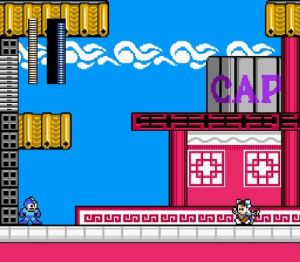 So if you’re in the same boat as me (which I’m just going to go ahead and guess that you are) then you’ll share in my excitement about the following – in just a few short days Capcom will be officially releasing a glorious amalgamation of those two franchises, giving them the crossover treatment in Street Fighter x Mega Man. For free on the PC to boot. Players will don the arm cannon once again in a NES-style environment complete with 8-bit remixed tracks. The only difference is that instead of the classic Robot Masters we’re used to, stars from the Street Fighter roster step in, each with their own custom movesets and weapons that can be won. Sounds crazy, right? Check out the trailer on Brelston’s blog at Capcom where seeing is indeed believing, my friends.
So if you’re in the same boat as me (which I’m just going to go ahead and guess that you are) then you’ll share in my excitement about the following – in just a few short days Capcom will be officially releasing a glorious amalgamation of those two franchises, giving them the crossover treatment in Street Fighter x Mega Man. For free on the PC to boot. Players will don the arm cannon once again in a NES-style environment complete with 8-bit remixed tracks. The only difference is that instead of the classic Robot Masters we’re used to, stars from the Street Fighter roster step in, each with their own custom movesets and weapons that can be won. Sounds crazy, right? Check out the trailer on Brelston’s blog at Capcom where seeing is indeed believing, my friends.
But there’s more to this than just a nostalgic crossover. It’s a fan-made nostalgic crossover that Capcom really wasn’t the primary developer for. The man behind the scenes is actually Singapore’s Seow Zong Hui, a “superfan” and Street Fighter competitor that approached Christian Svensson at the EVO 2012 event with a prototype on his laptop. Svensson in turned shared it with Capcom’s GregaMan and Brelston, who were so excited about the game that they’re using it to kick off Mega Man’s 25th anniversary. The game will be available for download on December 17th through the Capcom-Unity blog. And it couldn’t have come at a better time, with Capcom fans clamoring for more Mega Man.
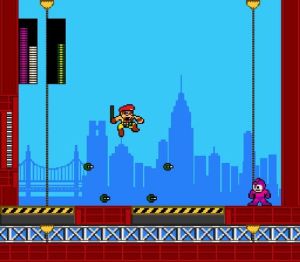 What really made me smile about this story is the fact that it was an example of a publisher embracing the work of one of their fans. The gaming community has seen a lot of unofficial fan-run projects in multiple forms of media get canned because publishers started flailing about with intellectual property claims and legalese-equipped flak, regardless of how awesome they looked. As an example Square-Enix killed Chrono Ressurection, an unofficial sequel to Chrono Trigger I was really looking forward to a few years back. And just this year Sega brought down the hammer on a fan-made Streets of Rage remake, that was made with fully original code and eight (that’s 8) years of work.
What really made me smile about this story is the fact that it was an example of a publisher embracing the work of one of their fans. The gaming community has seen a lot of unofficial fan-run projects in multiple forms of media get canned because publishers started flailing about with intellectual property claims and legalese-equipped flak, regardless of how awesome they looked. As an example Square-Enix killed Chrono Ressurection, an unofficial sequel to Chrono Trigger I was really looking forward to a few years back. And just this year Sega brought down the hammer on a fan-made Streets of Rage remake, that was made with fully original code and eight (that’s 8) years of work.
And I’m glad to see Capcom go the other way. Taking the highroad and believing it would be something fans would enjoy was the only criteria they used to make this decision. They didn’t lawyer up and scream “infringement.” And that connection to the fan community is something that should be inherent in publishers, and something I saw up at New York Comic Con as well. Not only on their Street Fighter 25th anniversary events but at their booth and on the floor they were all about fan engagement. I had a couple of questions about their new title Remember Me and the Product Manager just gave me her direct email address if I needed anything else, even as just a fan and not press. And Yoshinori Ono, producer for the Street Fighter series (God bless ‘im) was there in the mix too, dressed up like Chun-Li and on the floor interacting with a wave fans in whatever little English he had. That’s the kind of thing I like to see, and hope for more from some of the other big names.
Looking forward to giving this a go when it drops on Monday. And really, good on ya, Capcom.
Tushar Nene
Staff Writer
@tusharnene
Alright Dallas here we go again.***UCC*** Texas Bar Fights Round VIII is right around the corner! Do you have what it takes to win the pot? Show us what you got… if not come out anyway and support the fighting game community! (more…)


